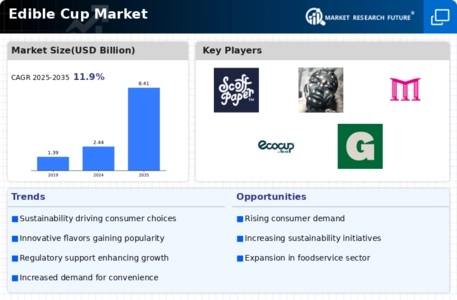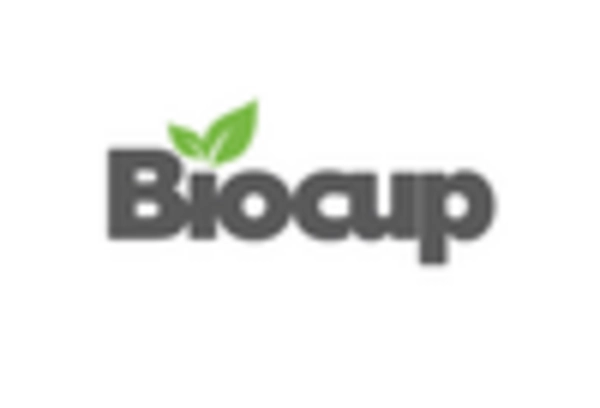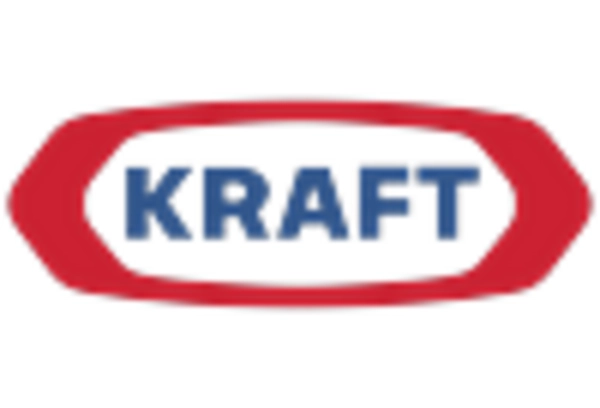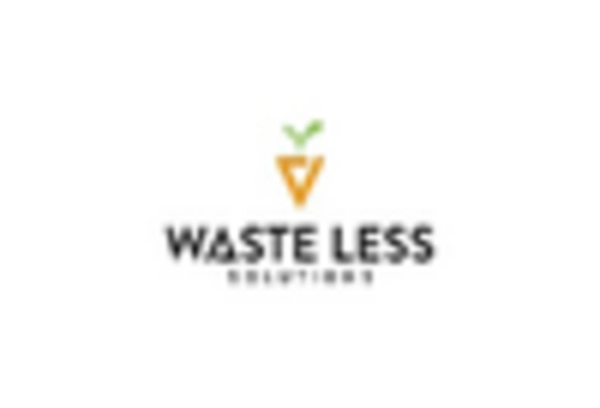Health and Wellness Trends
The rising focus on health and wellness is influencing consumer choices, thereby impacting the Edible Cup Market. As individuals become more health-conscious, there is a growing preference for products that are not only functional but also nutritious. Edible cups, often made from natural ingredients, can provide an additional source of nutrients, appealing to health-oriented consumers. Market data suggests that the demand for healthy food options is on the rise, with consumers seeking alternatives that align with their dietary preferences. This trend may lead to an expansion of the Edible Cup Market, as manufacturers innovate to create healthier, more appealing edible cup options that cater to this demographic.
Sustainability Initiatives
The increasing emphasis on sustainability appears to be a primary driver for the Edible Cup Market. Consumers are becoming more environmentally conscious, leading to a demand for products that reduce waste. Edible cups, made from biodegradable materials, align with this trend by offering an alternative to traditional plastic and paper cups. According to recent data, the market for sustainable packaging is projected to grow significantly, with edible packaging solutions gaining traction. This shift not only caters to consumer preferences but also encourages businesses to adopt eco-friendly practices. As companies strive to meet sustainability goals, the Edible Cup Market is likely to experience substantial growth, driven by the need for innovative, environmentally friendly solutions.
Technological Advancements
Technological advancements in food processing and material science are likely to propel the Edible Cup Market forward. Innovations in edible materials, such as the development of new recipes and production techniques, enhance the quality and variety of edible cups available. These advancements not only improve the taste and texture of the cups but also expand their usability across different food and beverage applications. As technology continues to evolve, the Edible Cup Market may witness an influx of new products that cater to diverse consumer preferences. This could lead to increased competition and a broader market presence, as companies leverage technology to differentiate their offerings.
Consumer Experience Enhancement
The desire for unique and engaging consumer experiences is driving innovation within the Edible Cup Market. As food and beverage establishments seek to differentiate themselves, edible cups offer a novel way to enhance customer satisfaction. These cups not only serve a functional purpose but also contribute to the overall dining experience, appealing to consumers' sense of adventure and novelty. Market trends indicate that experiential dining is gaining popularity, with consumers willing to pay a premium for unique offerings. This trend may lead to increased adoption of edible cups in various settings, from cafes to events, thereby expanding the Edible Cup Market as businesses strive to create memorable experiences.
Regulatory Support for Eco-Friendly Products
Regulatory frameworks promoting eco-friendly products are emerging as a significant driver for the Edible Cup Market. Governments are increasingly implementing policies aimed at reducing plastic waste and encouraging sustainable practices. These regulations create a favorable environment for the adoption of edible cups, as businesses seek to comply with new standards. The Edible Cup Market stands to benefit from such regulatory support, as it aligns with governmental objectives to promote sustainability. As more regions adopt stringent regulations on single-use plastics, the demand for edible alternatives is expected to rise, further propelling the growth of the market.


















Leave a Comment